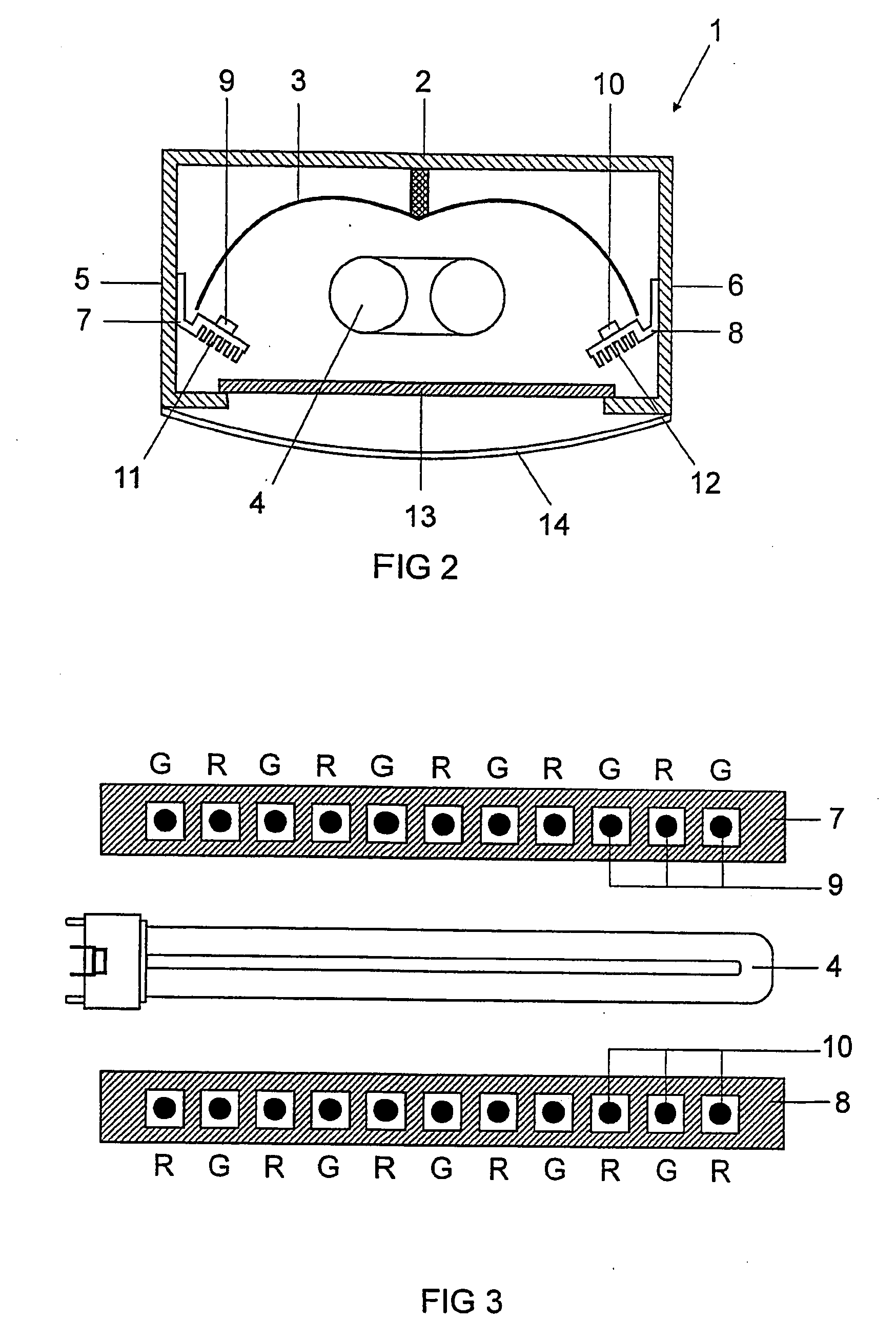Color Adaptive Lighting System
a technology of adaptive lighting and lighting system, which is applied in the direction of lighting applications, light source combinations, and with built-in power, can solve the problems of using leds, and achieve the effect of improving the control of the light color of the light produced by the lighting system
- Summary
- Abstract
- Description
- Claims
- Application Information
AI Technical Summary
Benefits of technology
Problems solved by technology
Method used
Image
Examples
first embodiment
[0013]FIG. 2 shows a section through a lighting system,
[0014]FIG. 3 shows, schematically from below, the construction of the lighting system shown in FIG. 1,
second embodiment
[0015]FIG. 4 shows a section through a lighting system according to the invention, and
third embodiment
[0016]FIG. 5 shows a section through a lighting system according to the invention.
PREFERRED EMBODIMENTS OF THE INVENTION
[0017]FIG. 1 illustrates the position of the individual light sources of a lighting system according to the invention. In this case, the lighting system has a white compact fluorescent lamp CFL and at least in each case one blue, green and red LED. With a lighting system which contains all four light sources, light can be realized with all color loci within the triangle A formed by the three differently colored LEDs, and naturally in particular all color loci on the Planckian locus. If the lighting system has, in addition to the white compact fluorescent lamp CFL, only red and green LEDs, all color loci of the smaller triangle B indicated by dashed lines can be represented by the lighting system, in particular in this case all color loci on the Planckian locus to the right of the color locus of the compact fluorescent lamp CFL.
[0018]FIG. 2 shows a section through a...
PUM
 Login to View More
Login to View More Abstract
Description
Claims
Application Information
 Login to View More
Login to View More - R&D
- Intellectual Property
- Life Sciences
- Materials
- Tech Scout
- Unparalleled Data Quality
- Higher Quality Content
- 60% Fewer Hallucinations
Browse by: Latest US Patents, China's latest patents, Technical Efficacy Thesaurus, Application Domain, Technology Topic, Popular Technical Reports.
© 2025 PatSnap. All rights reserved.Legal|Privacy policy|Modern Slavery Act Transparency Statement|Sitemap|About US| Contact US: help@patsnap.com



